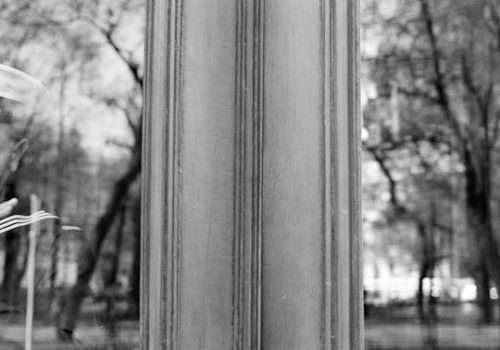You would expect photographs about corruption to involve the mafia, power games, violence and opulence. But Misha Friedman’s photographs are calm, quiet: landscapes at night, street scenes, empty rooms, bare walls, abandoned lots. We see sailors, lovers, politicians, policeman, workers, soldiers, nurses, veterans—the whole spectrum of society. They are relatively trivial scenes from urban and rural life, with the occasional touch of humor, shot in timeless black and white, except for a single, nearly monochromatic red image.
This could be a sweeping portrait of contemporary Russia—and that’s precisely the point. With the exception of a few clues, like police tape blocking access to an area or a woman being assaulted in the middle of the city, the details of the story are found mainly in the captions, which relate disturbing facts about backroom politics, high death rates, the sex trade, and a fading sense of solidarity. By examining corruption through everyday scenes which involve ordinary citizens instead of the ‘untouchables’ in power, Friedman offers a new definition of corruption (the one indicated in the title), which affects every aspect of Russian life: education, health care, justice, and even the most insignificant social interactions. Friedman’s use of the panoramic format, usually reserved for landscapes, echoes his thesis: corruption extends beyond the scope of our vision.
Laurence Cornet
Misha Friedman : Is Corruption in Russia’s DNA?
287 Spring Art Gallery & Performance Space
From February 15th to March 2nd, 2013
287 Spring Street
New York NY 10013
USA
Tél. : +1 212 620 0935
Book
“Photo 51. Is Corruption in Russia’s DNA?”
Misha Friedman
Designed and printed by De.mo
Self-published
20 dollars.
















